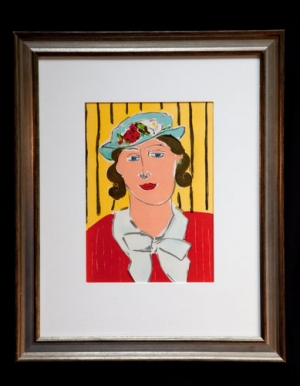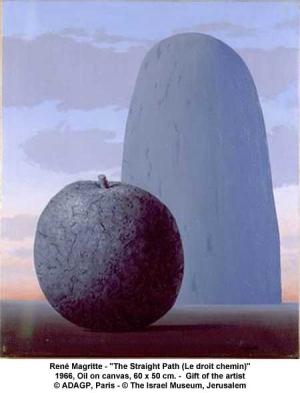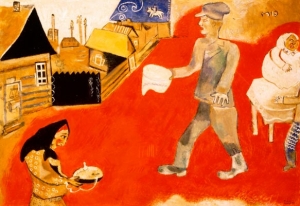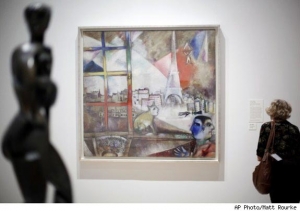|
Displaying items by tag: Chagall
Scholars tend to seek out the Morgan Library & Museum’s archives as a place to research old masters and 19th-century drawings, or to peek at the letters that modern masters like Chagall and Dubuffet wrote to the art dealer Pierre Matisse. But a recent gift from the Roy Lichtenstein estate will now make the Morgan a destination for classic contemporary artists, too.
While organizing the Morgan’s 2010 exhibition “Roy Lichtenstein: The Black-and-White Drawings, 1961-1968,” Isabelle Dervaux, curator of modern and contemporary drawings, and William M. Griswold, the Morgan’s director, got to know Dorothy Lichtenstein, the artist’s widow. It is because of that friendship, Mr. Griswold said, that Ms. Lichtenstein recently donated a group of sketchbooks and drawings from her husband’s estate to the Morgan.

Six years ago wholesale powerhouse, Costco, stopped selling fine art amid allegations that two Picasso drawings sold on their online store were fakes. The company recently decided to give the venture another go adding “Fine Art” as a category in their “Home & Décor” section. Nestled between “Bathroom,” “Bedding,” and “Kitchen & Dining,” the foray into the art market seems to be going well. In the past two weeks or so, 8 out of the 10 have sold including a framed screen print by Andy Warhol for $1,450 and a framed lithograph by Henri Matisse for $1,000.
The works are supplied by Greg Moors, an art dealer based in San Francisco who provided Costco with art when they first launched the department in 2003. Driven by the notion of financially accessible art, Moors dismissed the peculiarity of a discount warehouse store selling fine art. In fact, this practice is not exclusive to Costco. Between 1962 and 1971, Sears sold over 50,000 works by such artists as Picasso, Rembrandt, Chagall, and Whistler as part of the Vincent Price Collection of Fine Art. Customers could even buy works on layaway.
Although he did not supply the store with the questionable Picassos, Moors is very careful about what is available via Costco. Most of the works are unsigned to avoid questions about the signatures’ authenticity. He is also attempting to sell the works of more living artists and is avoiding artists who are known to have a proliferation of fakes circulating in the art market.

The Israel Museum will put up for sale 38 rare artworks, with an estimated value of $17 million. The museum plans to use the proceeds to upgrade its collection. Sotheby's will sell the artworks in a series of auctions, beginning on November 2, 2011, in New York, and ending in February 2012 in London.
The art up for sale includes "Le droit chemin" oil by surrealist Rene Magritte, estimated at $2.5-3.5 million; works by Camille Pissarro and Marc Chagall, estimated at $1.5-2.5 million per painting; and works by Chaïm Soutine, Pablo Picasso, and other important artists.
This is an extraordinary event that will likely echo through the international market. Museums rarely sell pieces from their collections. The Israel Museum's decision highlights the difficulties in improving their collections through donations and acquisitions budgets. Reasons for this situation include the economic crisis since 2008, which has caused donors to reduce large donations to the arts. Even before the crisis, especially in the preceding decade, soaring prices for top works of art made it difficult for museums to buy works of art.
The Israel Museum has set up an acquisitions team to help it create an organized system of acquisitions, but the process is quite complicated. Sometimes, there is competition for newly recognized important works art, and not just for already valuable pieces. Museums, which always have budget constraints, are struggling. For example, reports claim that New York's MOMA has bought the important piece "The Clock" by Christian Marclay, currently on display at the Israel Museum in its first display in a leading museum.

Stand outside New York's Metropolitan Opera and look at the two giant murals Marc Chagall painted in the mid-1960s. Angelic figures and exotic animals float through a sea of sumptuous red and brilliant yellow, the work of an 80-year-old man repeating himself. Chagall, by then a beloved painter without much to say, was simply grinding out Chagalls. Large cultural institutions, which needed blandly meaningless public art, knew that even sad Chagalls are happy, and they swarmed to the artist like flying cows to the flame.
"Paris Through the Window: Marc Chagall and His Circle," which opened March 1 at the Philadelphia Museum of Art, explores a very different Chagall. It tracks the early encounter of this desperately poor, culturally isolated Jewish Russian artist from Vitebsk with the art of Paris, from just before the First World War until the Second World War scattered the diaspora of Eastern European genius that had gathered there in the first decades of the 20th century. It shows him grappling with cubism and the stylized exoticism of Ballets Russes, the dance company that planted the flag of Russian culture in what was then, arguably, the capitol of Western artistic life.
It also places him in the context of a fabled artist community known as La Ruche, a rounded building on the edge of fashionable Paris filled with affordable studios that incubated much mischief and many talents. Between 1911 (when he arrived) and 1914 (when he returned for what became an extended stay in Russia), Chagall crossed paths with Alexander Archipenko, Fernand Leger, Jacques Lipchitz, Amedeo Modigliani, Chaim Soutine - all represented in this exhibition, curated by Michael Taylor. It was, as one resident wrote, "a great cauldron, seething with vitality."
The title of the exhibition, "Paris Through the Window," refers in part to the windows of La Ruche, which had sixteen sides, forming a stubby cylinder filled with wedge-shaped studios, an artistic inversion of the panopticon. It is also the title of one of the largest and most powerful Chagalls in the show, in which a strangely human cat and a two-faced man are framed by an open window, with the Eiffel Tower, the roofs of Paris and an upside-down train chugging behind them.

new exhibition at the Philadelphia Museum of Art is taking a fresh look at the influence that Paris had on Marc Chagall and his fellow modernists from 1910 to 1920.
The show, "Paris Through the Window: Marc Chagall and His Circle," opens Tuesday. It is being presented in conjunction with an international arts festival in Philadelphia that opens in April.
The exhibition "represents the Museum's contribution to this festival and will focus on the powerful influence that Paris had on Chagall and his contemporaries," museum director Timothy Rub said.
The show, located in the museum's Perelman annex, includes roughly 40 paintings and sculptures culled mainly from the museum's own collection but reconfigured in a new way. Other featured artists include Chaim Soutine, Amedeo Modigliani and Jacques Lipschitz.
Curator Michael Taylor said the show will provide visitors with "a unique opportunity to reconsider the cross-fertilization that took place" when Chagall and his contemporaries lived and worked in Paris.
|
|
|
|
|